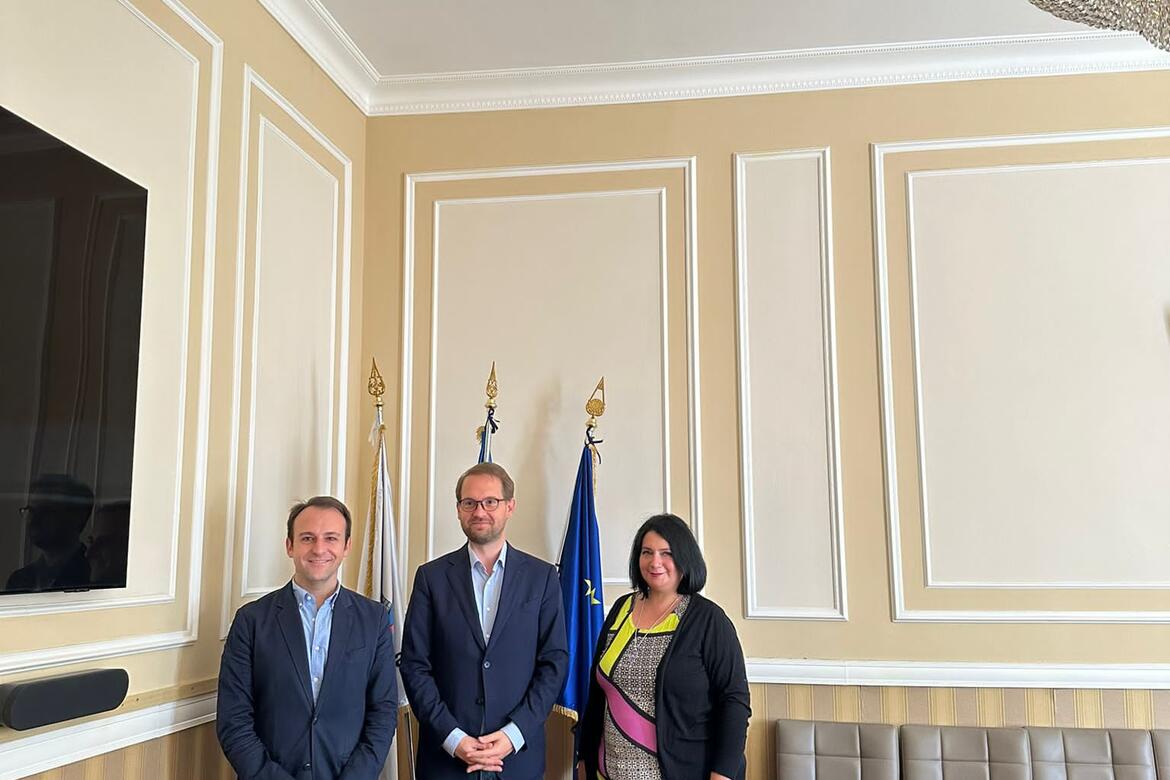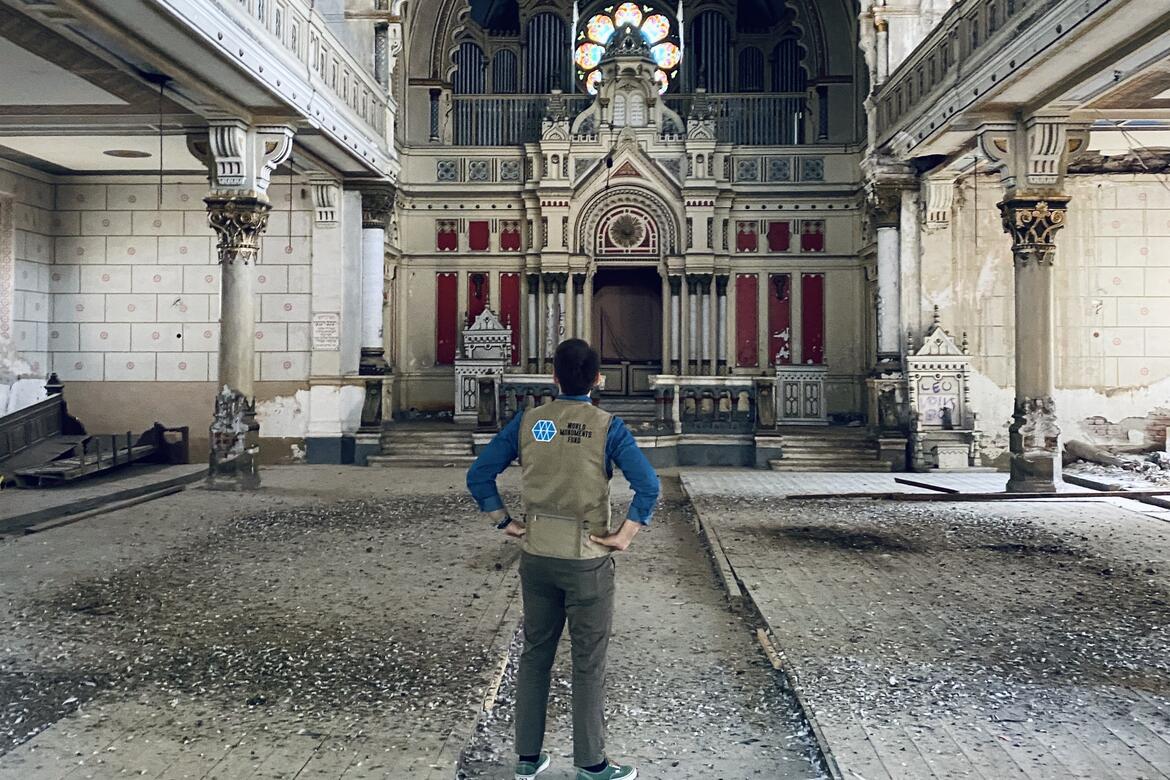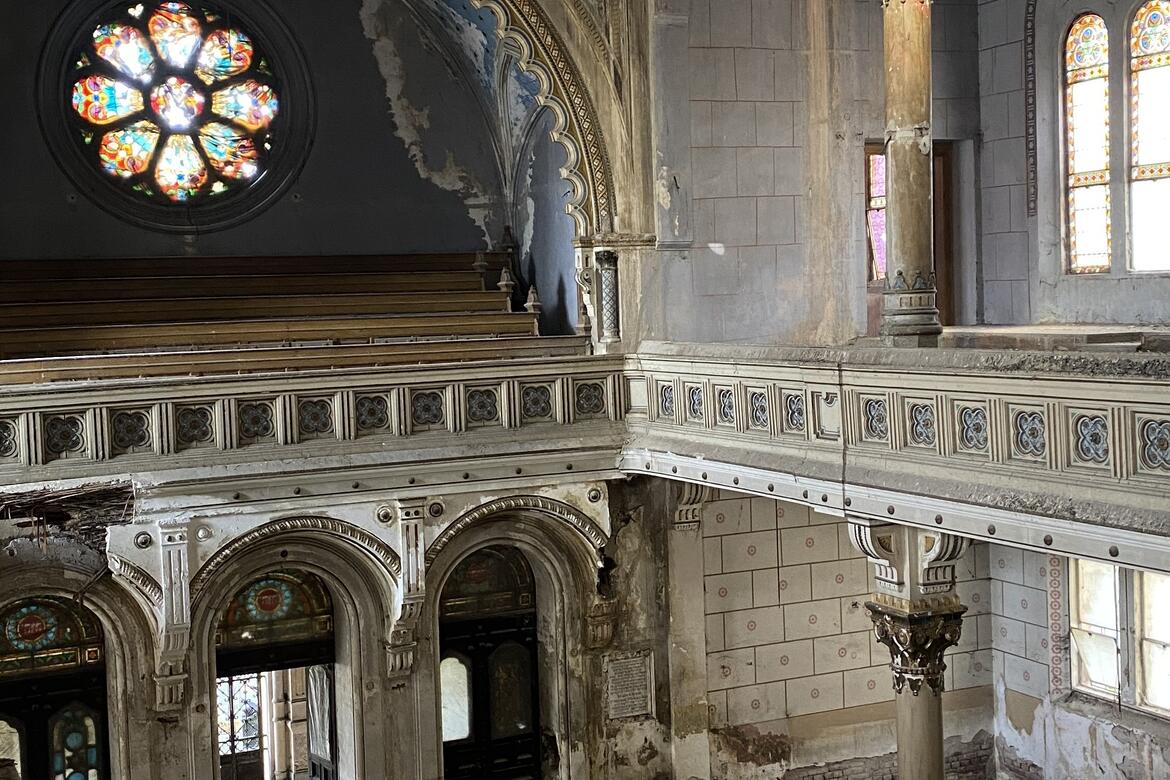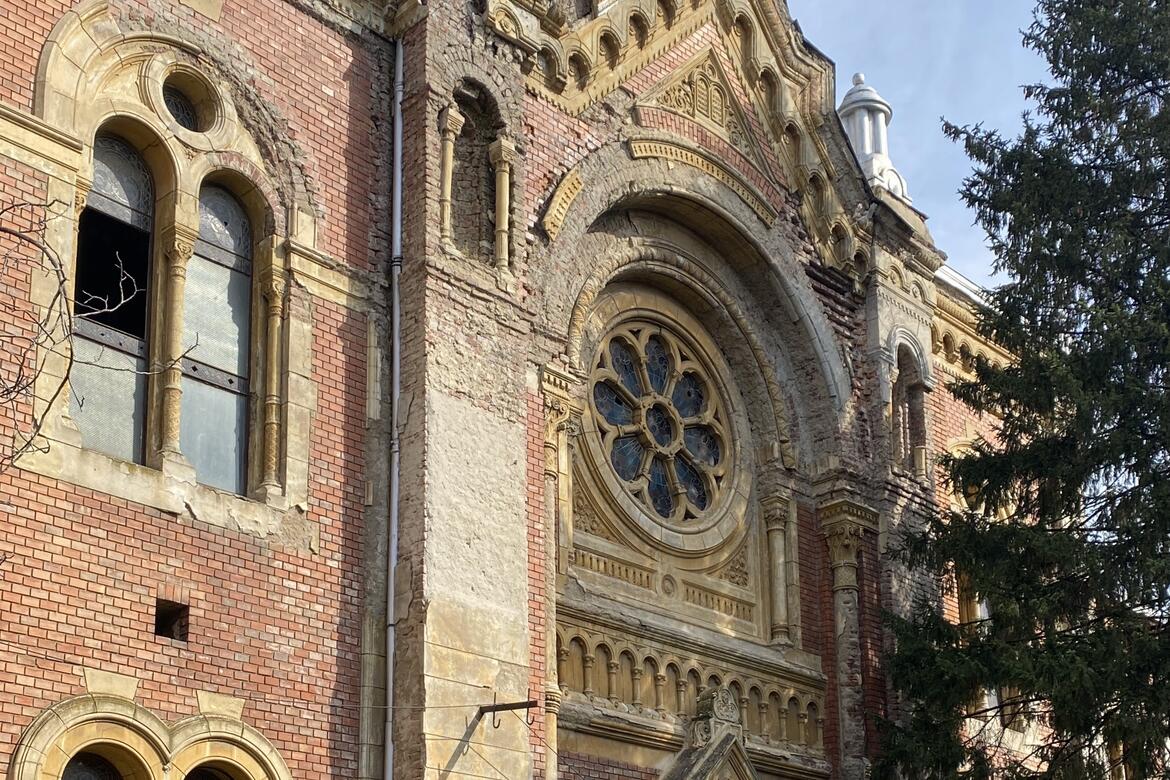Returning a Historic Synagogue to Life: A Timişoara, Romania, Travelogue
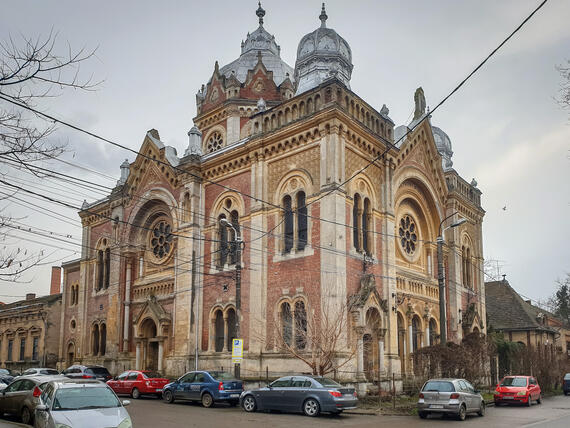
When World Monuments Fund (WMF) first began our Jewish Heritage Program, it was with the specific goal of preserving and revitalizing historic Jewish sites in post-communist countries in Central and Eastern Europe. The Fabric Synagogue, a 2022 World Monuments Watch site located in the Romanian city of Timişoara, in many ways recalls the kinds of projects we focused on in those early years. World War II and Ceauşescu’s reign dealt severe blows to what was once a large and vibrant local Jewish community. The Fabric Synagogue bears witness to this painful history: at the time of my visit this past fall, the house of worship had been unused for some 40 years as the number of Jews remaining in Timişoara has dropped to around 600.
This small but dedicated community—our partners at Fabric Synagogue and my gracious hosts during my trip—have been working tirelessly to make sure that Timişoara’s Jewish heritage is not lost forever and continues to bear material witness to the presence and contributions of their ancestors. Along with a local structural engineer; the President of the Jewish Community of Timișoara, Luciana Friedmann; and representatives of the municipal Department of Heritage, I conducted a site visit of the building to get a better understanding of its present physical condition. Taking its name from the presence of textile factories in the surrounding district, the Fabric Synagogue is a striking building capped with large silver domes. Its Moorish Revival design, by famed Austro-Hungarian architect Lipot Baumhorn (1860-1932), speaks to a nineteenth-century interest in Islamic motifs that reminded viewers at the time of the flowering Jewish cultural life of Al-Andalus. Today, however, the beauty of the aron kodesh (the Torah ark) and the organ’s sound are marred by the building’s critical physical condition, worsened by decades of unuse, vandalization, water infiltration, and harsh weather. Restoring a structure in this condition will take a lot of effort and know-how. At the Polytechnic University of Timişoara School of Architecture, I met with professors to discuss a plan to involve local architecture students in the fieldwork and site analysis, providing younger architecture students with expert training in heritage preservation skills and incorporating a case study of the project into the curriculum. Lastly, I had the opportunity to meet with the Mayor of Timişoara, Dominic Fritz, to discuss WMF’s project for the synagogue and the collaboration between WMF, the Jewish Community, and the municipal government. Following our meeting, on October 19, the city of Timişoara and the Jewish Community made an announcement sharing that the municipality was obtaining administration of the building from the Jewish Community.
I was honored to be invited to participate in Yom Kippur observances by my hosts and to discuss in greater depth their vision for the remarkable site. Breathing new life into the Fabric Synagogue has the potential to contribute to the revitalization of the historic area surrounding the building, bringing a host of economic and social opportunities. The designation of Timişoara as a 2023 European Capital of Culture has given us another unique opportunity to raise awareness about the important living Jewish heritage of Timişoara on a global scale. Neighbors are excited about what the future holds for Fabric, neglected for so many decades—and I am very humble and excited to work with them to help make their vision a reality.
Learn More
World Monuments Fund safeguards cultural heritage around the globe, ensuring our treasured places are preserved for present and future generations.
Sign up for our newsletter to receive regular updates on our projects, stories from the field, upcoming events, and more!
World Monuments Fund’s work at the Fabric Synagogue of Timișoara has been made possible, in part, by the David Berg Foundation and WMF's Jewish Heritage Program Endowment.
The Jewish Heritage Program at World Monuments Fund has been made possible, in part, by support from Mrs. Joyce Z. Greenberg, The Ronald and Jo Carole Lauder Foundation, the David Berg Foundation, The Richard and Rhoda Goldman Fund, Kate Ganz and Daniel N. Belin, Tianaderrah Foundation / Nellie and Robert Gipson, Charles and Lynn Schusterman Family Philanthropies, the Koret Foundation, and anonymous donors.

